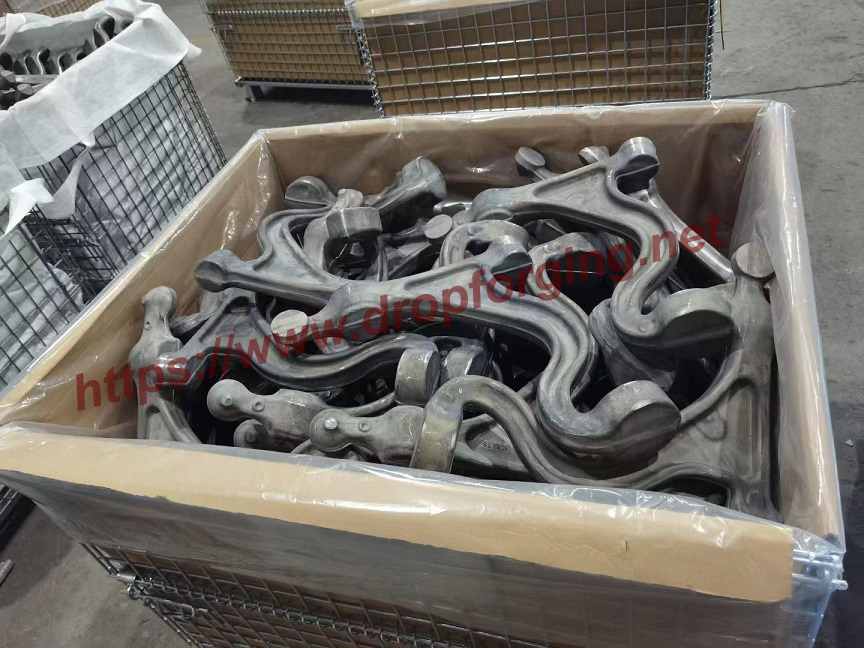How to Perform Aluminum Forging: A Step-by-Step Guide

In this article, we will provide a step-by-step guide on how to perform aluminum forging.
Step 1: Preparation
Before starting the aluminum forging process, you need to prepare the aluminum billet. The billet is the raw material used in the forging process. It should be clean, free of any debris or impurities, and the right size and shape for the intended product.
Step 2: Heating
After preparing the billet, the next step is to heat it to the correct temperature. The heating process is critical because it softens the aluminum, making it easier to shape than steel forging. The temperature required for aluminum forging depends on the alloy and the desired shape of the final product.
Aluminum alloys typically have a lower forging temperature than other metals, such as steel or titanium. The recommended temperature range for aluminum forging is between 700°F and 950°F. However, some alloys may require a higher temperature, up to 1100°F.
Step 3: Forging
Once the billet reaches the desired temperature, it is ready for forging. Forging aluminum requires a significant amount of force to shape the material. You can use a forging press or hammer to apply the necessary pressure.
The forging process typically involves three stages: upsetting, drawing out, and finishing. In the upsetting stage, you apply pressure to the end of the billet to make it wider and shorter. The drawing out stage involves stretching the material to create the desired length and shape. The finishing stage involves refining the shape and removing any excess material.
Step 4: Cooling
After the forging process is complete, the aluminum needs to cool down to room temperature. Cooling too quickly can cause the material to crack or warp. For larger forgings, it is essential to cool them slowly to avoid thermal shock.
Step 5: Machining and Finishing
The final step in the aluminum forging process is machining and finishing. Machining involves cutting or drilling the forged aluminum to create the desired shape and size. Finishing involves polishing or coating the material to enhance its appearance and protect it from corrosion.
Machining and finishing are critical because they determine the final quality of the forged aluminum product. It is essential to use high-quality machining tools and finishing techniques to achieve the desired results.
Tips for Successful Aluminum Forging
Here are some tips to help you perform successful aluminum forging:
- Choose the right aluminum alloy: The choice of aluminum alloy is critical to the success of the forging process. Different alloys have different forging temperatures and properties, so it is essential to choose the right one for your intended product.
- Control the temperature: The temperature of the aluminum billet is critical to the forging process. It is essential to monitor the temperature carefully and ensure that it stays within the recommended range.
- Use the right equipment: The right forging equipment is essential for successful aluminum forging. A forging press or hammer with the right tonnage and stroke length can help you achieve the desired shape and size.
- Work with an experienced forging company: If you are new to aluminum forging, it is recommended to work with an experienced forging company like CFS Forge. We can help you choose the right alloy, temperature, and equipment and provide guidance throughout the forging process.
Conclusion
Aluminum forging is a versatile and effective manufacturing process used in many industries. By following the steps outlined in this guide and using the tips provided, you can perform successful aluminum forging and create high-quality products that meet your customers' needs. Remember to choose the right aluminum alloy, control the temperature, use the right equipment, and work with an experienced forging company to achieve the best results. With proper preparation, heating, forging, cooling, and finishing, you can create durable and corrosion-resistant aluminum products that meet the highest standards of quality and performance.
In summary, aluminum forging is a complex process that requires careful preparation, monitoring, and control to achieve the desired results. CFS Forge is a professional aluminum forging company, we can produce forged aluminum parts to any specification required. If you need any aluminum forging service, pls remember to contact our forging company!


 sales@dropforging.net
sales@dropforging.net